Mahani Aljunied
SeaExam and SeaBench: Benchmarking LLMs with Local Multilingual Questions in Southeast Asia
Feb 10, 2025Abstract:This study introduces two novel benchmarks, SeaExam and SeaBench, designed to evaluate the capabilities of Large Language Models (LLMs) in Southeast Asian (SEA) application scenarios. Unlike existing multilingual datasets primarily derived from English translations, these benchmarks are constructed based on real-world scenarios from SEA regions. SeaExam draws from regional educational exams to form a comprehensive dataset that encompasses subjects such as local history and literature. In contrast, SeaBench is crafted around multi-turn, open-ended tasks that reflect daily interactions within SEA communities. Our evaluations demonstrate that SeaExam and SeaBench more effectively discern LLM performance on SEA language tasks compared to their translated benchmarks. This highlights the importance of using real-world queries to assess the multilingual capabilities of LLMs.
SeaLLMs 3: Open Foundation and Chat Multilingual Large Language Models for Southeast Asian Languages
Jul 29, 2024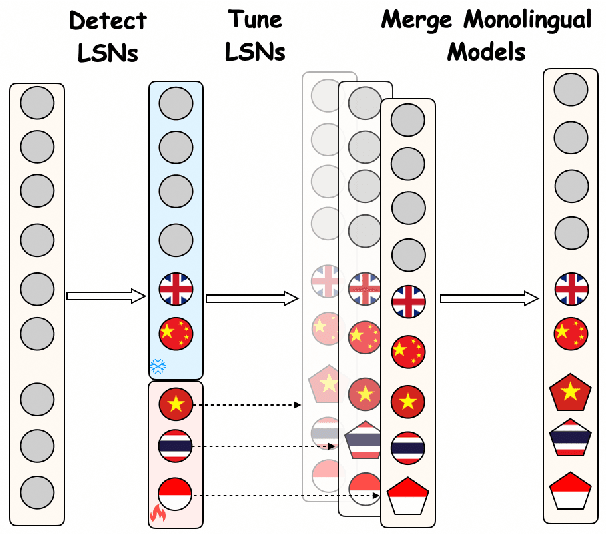
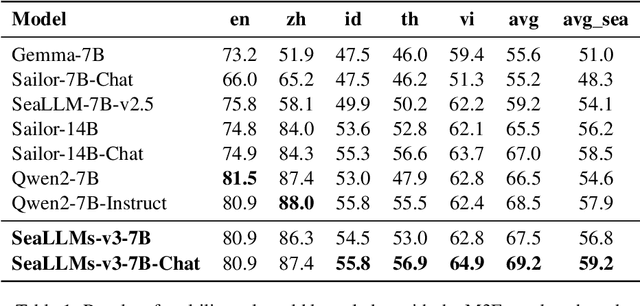
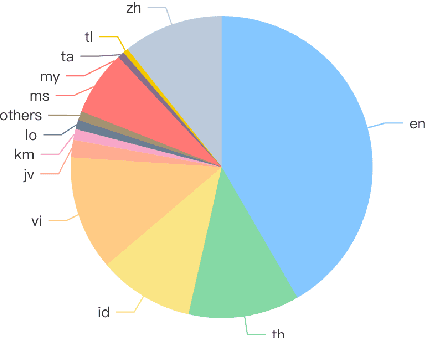
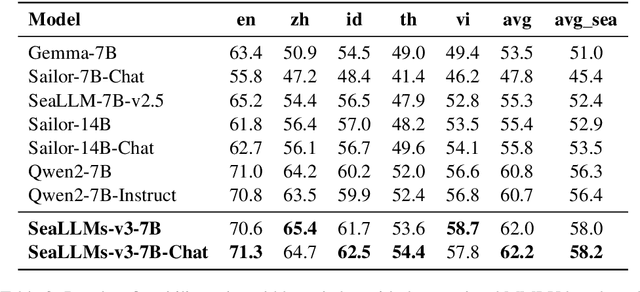
Abstract:Large Language Models (LLMs) have shown remarkable abilities across various tasks, yet their development has predominantly centered on high-resource languages like English and Chinese, leaving low-resource languages underserved. To address this disparity, we present SeaLLMs 3, the latest iteration of the SeaLLMs model family, tailored for Southeast Asian languages. This region, characterized by its rich linguistic diversity, has lacked adequate language technology support. SeaLLMs 3 aims to bridge this gap by covering a comprehensive range of languages spoken in this region, including English, Chinese, Indonesian, Vietnamese, Thai, Tagalog, Malay, Burmese, Khmer, Lao, Tamil, and Javanese. Leveraging efficient language enhancement techniques and a specially constructed instruction tuning dataset, SeaLLMs 3 significantly reduces training costs while maintaining high performance and versatility. Our model excels in tasks such as world knowledge, mathematical reasoning, translation, and instruction following, achieving state-of-the-art performance among similarly sized models. Additionally, we prioritized safety and reliability by addressing both general and culture-specific considerations and incorporated mechanisms to reduce hallucinations. This work underscores the importance of inclusive AI, showing that advanced LLM capabilities can benefit underserved linguistic and cultural communities.
SeaLLMs -- Large Language Models for Southeast Asia
Dec 01, 2023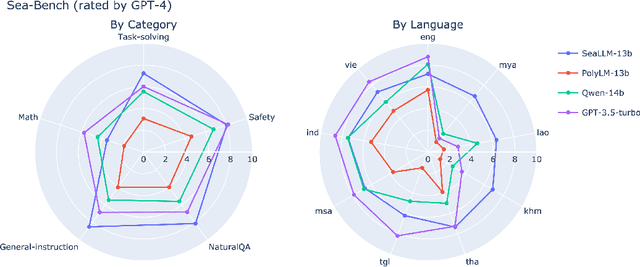
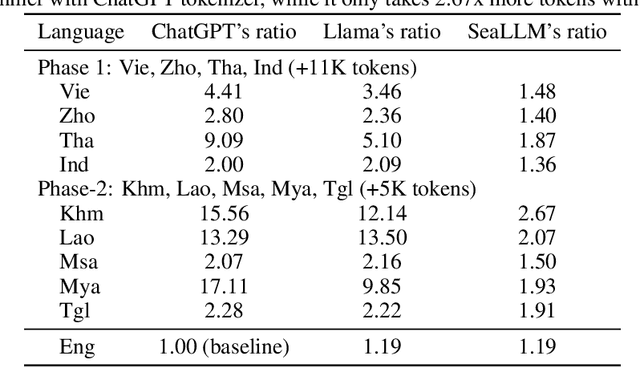
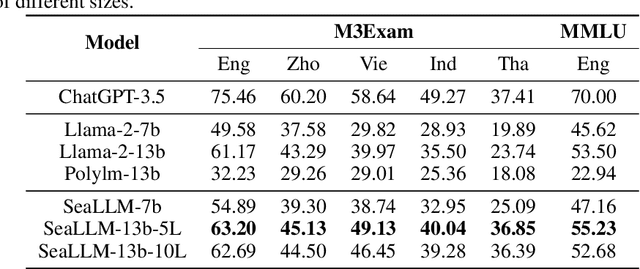
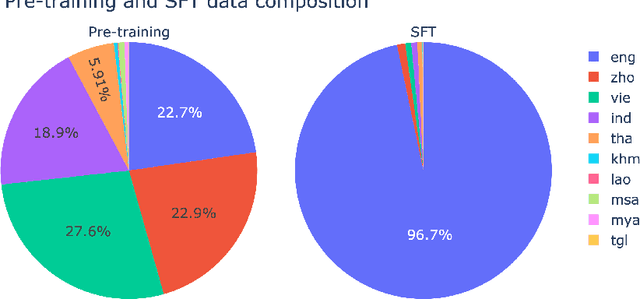
Abstract:Despite the remarkable achievements of large language models (LLMs) in various tasks, there remains a linguistic bias that favors high-resource languages, such as English, often at the expense of low-resource and regional languages. To address this imbalance, we introduce SeaLLMs, an innovative series of language models that specifically focuses on Southeast Asian (SEA) languages. SeaLLMs are built upon the Llama-2 model and further advanced through continued pre-training with an extended vocabulary, specialized instruction and alignment tuning to better capture the intricacies of regional languages. This allows them to respect and reflect local cultural norms, customs, stylistic preferences, and legal considerations. Our comprehensive evaluation demonstrates that SeaLLM-13b models exhibit superior performance across a wide spectrum of linguistic tasks and assistant-style instruction-following capabilities relative to comparable open-source models. Moreover, they outperform ChatGPT-3.5 in non-Latin languages, such as Thai, Khmer, Lao, and Burmese, by large margins while remaining lightweight and cost-effective to operate.
 Add to Chrome
Add to Chrome Add to Firefox
Add to Firefox Add to Edge
Add to Edge